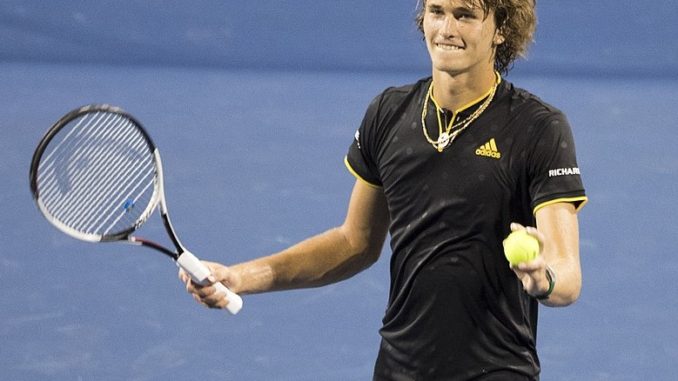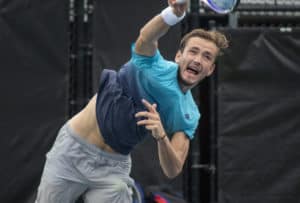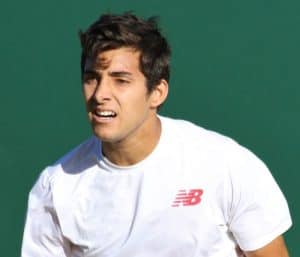
How is the next-gen performing and do tennis fans have anything to worry following the retirement of the Big Three? Samir Talwar has a closer look.
The new year and decade is upon us and with that so is the 2020 ATP season.
What has been the topic of discussion frequently in years past has been none other than the relentless consistency and dominance of the Big Three (Roger Federer, Rafael Nadal and Novak Djokovic) over the last decade and a half, and questions around when the tennis fraternity would witness a ‘Changing of the Guard’.
[the_ad id=”14063″]
While the 2010s witnessed the likes of Marin Cilic, Stanislas Wawrinka, Juan Martin del Potro, Tomas Berdych, Jo-Wilfried Tsonga, David Ferrer, Milos Raonic, Kei Nishikori and others challenging the Big Three, none turned out to be legitimate challenges to the Big Three Supremacy.
The only notable challenge came from Britain’s Andy Murray winning three Grand Slam, two Olympic single gold medals, several Masters 1000s and being a regular final four member at major tournaments.
What about the Next Gen?
As the 2010s drew to a close, there came with it an increased focus on the next generation of players in turn coining the term ‘Next Gen’ and with that, the advent of the year-end ATP Next Gen Finals (congruent to the Tour Finals) and such with an increased focus on these players.
While the population that comprise ‘Next Gen’ is ever evolving and transient, over the last three or four seasons there have definitely been a handful earmarked for greatness.
Also Read:
Some of these individuals have performed well at different levels (ATP 250/500/1000, Tour Finals to name some) and done well to defeat the Big Three and others. But, if we look at the majors, the questions arises as to what is holding back the Next Gen and when will there really be a changing of the guard at the Grand Slams.
When the term ‘Next Gen’ was coined, some of the first identified members were Hyeon Chung, Andrey Rublev, Alexander Zverev and Borna Coric to name a few of the more prominent individuals.

With the ebb and flow of names, Daniil Medvedev, Karen Khachanov, Stefanos Tsitsipas, Frances Tiafoe, Taylor Fritz, Denis Shapovalov, Hurbert Hurkacz, Alex De Minaur, Felix Auger-Aliassime, and more recently the likes of Jannik Sinner, Uger Humbert, Corentin Moutet, Casper Ruud and others all seem to belong at some point or the other.
While Chung did well to make the semi-finals of the Australian Open in 2018, fitness issues, indifferent form and a prolonged and (thus far) underwhelming return to the tour seem to define where he stands at the moment.
Rublev was Chung’s runner-up in the initial Next Gen Year-End finals as well as a US Open quarterfinalist in 2017, but was also faced with a host of injuries.
The young Russian has made a strong comeback since the middle of last year, winning three ATP titles, but again fallen short at the last two slams of getting into the stages that really matter. While he is effective and will possibly make a mark, he will definitely need to add to his currently one-dimensional game to be a regular feature in the second weekend of majors.
Borna Coric has been on the tour for half a decade despite being only 23 years of age.
While he defeated Rafa Nadal as a rookie, and seized a Halle 500 title from the ten-time champion Roger Federer, along with being a finalist at Shanghai, he is yet to go past the fourth round of a major, having played majors since 2015.
[the_ad id=”14063″]
The Canadian duo of Denis Shapovalov and Felix Auger-Aliassime has been the center of plenty of attention, as well as exhibited promise, and moved up the rankings with stellar performances in the best of three formats.
They are yet to do anything of note at a major, and while aging Canadian Milos Raonic made the final eight at this year’s Australian Open again, the two Canadian Next Gen members exited on day 1.
Similarly, the American duo of Taylor Fritz and Frances Tiafoe (or trio if we want to include Reilly Opelka) has had decent runs at tournaments like the New York Open, the Delray Beach Open, Eastbourne International and others, but have not come close to week two at a major in a few attempts now.
 Poland’s Hurkacz, Norwegian Ruud, Chilean Cristian Garin have done well to win at Winston Salem and on the Latin American clay respectively, as well as at team events like the ATP Cup, but are unable to get past the likes of John Milman or Benoit Paire at majors.
Poland’s Hurkacz, Norwegian Ruud, Chilean Cristian Garin have done well to win at Winston Salem and on the Latin American clay respectively, as well as at team events like the ATP Cup, but are unable to get past the likes of John Milman or Benoit Paire at majors.
The ‘freshest’ Next Gen like Jannik Sinner, Ugo Humbert and Corentin Moutet impressed at the Next Gen finals, Qatar Open, ASB Classic among others, but are unable to make it past Day 2 at the majors still.
Young Aussie Alex De Minaur has been a force on the ATP 250 and 500 circuit and one hopes his grit and counter-punching attitude takes him places, but one fears he may join the crowd when it comes to the four big tournaments.
The Zverev, Tsitsipas & Medvedev (and Thiem!)
Moving on to the ‘crème de la crème’ of the Next Gen, let’s take a look at Zverev, Tsitsipas and Medvedev a little more closely.
It would be premature to write off Daniil Medvedev, given his stellar 2019 winning two Masters 1000s, two ATP 250s, playing six finals and being a US Open finalist. However, 0-6 in five setters, blowing a 2 sets to 1 lead against a ‘somewhat depleted” Stan Wawrinka at a major, and collapsing in the final set at the ATP finals from 5-1 up in a decider are not habits one wants if one is aiming at emulating the Big Three.
Tsitsipas and Zverev have both won the title at what is known sometimes as the “Fifth Grand Slam”, i.e. the ATP Tour Finals which involves defeating some of the top eight men in a best of three format.
Additionally, Tsitsipas has defeated all of the Big Three in 2019 (commendable by any standards), yet not made it past Day 5 at the last three majors. What is more deflating is the losses were almost meek surrenders to players of little note.
With three Masters 1000 titles under his belt, one would think that Zverev is now a regular feature at the business end of a major. However, he has only been a quarterfinalist twice in years past (both times at the French Open), and currently featuring in the final eight in Melbourne is his third such appearance overall.
Zverev’s majors thus far have largely been a mix of long matches against lesser players, five set victories after being in commanding positions and losses in the initial stages of the tournament.
While no longer members of ‘Next Gen’, and perhaps ‘Next Gen’ before the term was coined, the likes of Dominic Thiem and Nick Kyrgios have displayed immense talent and yet not got where they should have at the majors. While Kyrgios’ shortcomings have largely been related to attitude and temperament, Thiem has put in everything one could possibly have asked for, yet fallen short due to reasons that are at times inexplicable.
Tennis fans and enthusiasts around the globe still hope that the new generation does rise to the occasion and the passing of the baton is as seamless as can be. However, we are possibly spoilt by the Golden Era of the sport (i.e. the Big Three), because there is nothing that currently suggests that the dominance of the Big Three is coming to a close in the foreseeable future.
Be the first to comment